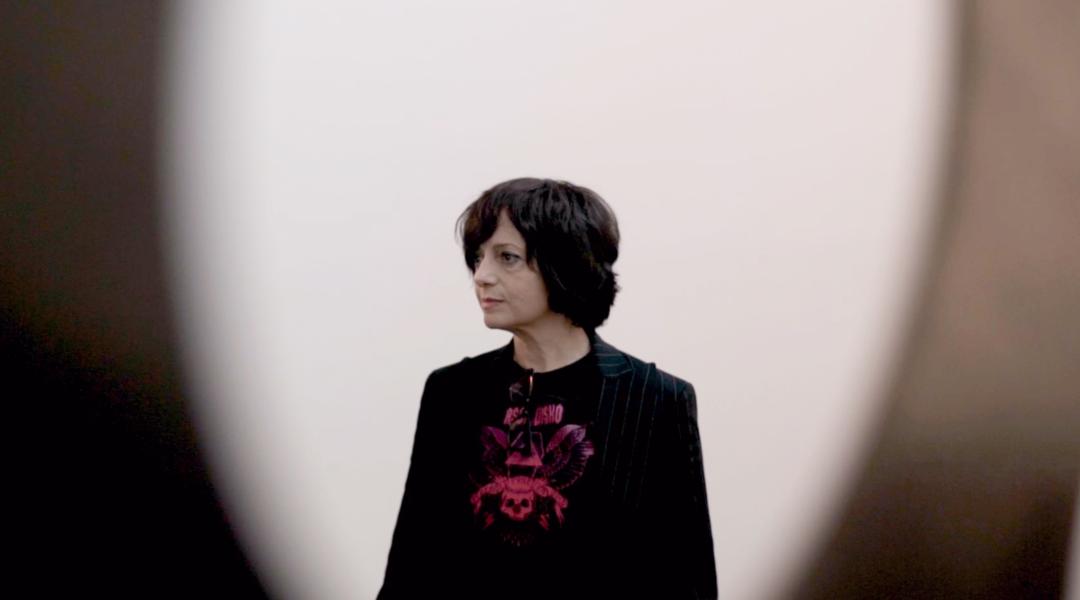Ana Laura Aláez
What You Don’t See on the Dance Floor

Twenty years ago, Ana Laura Aláez turned the art circuit upside down with an installation that consisted of creating a night club inside a national museum. Now established as one of the key voices of her generation, the artist who made orthodox critics feel very uncomfortable in the 1990s once again delights us with an exhibition that traces her entire career and starts a dialogue with the spectator about the possibility of what could have been.
Ana Laura Aláez (Bilbao, 1964) first came to the fore in 1991, when gallery owner and ARCO founder Juana de Aizpuru presented her works and that of three other young and promising Spanish artists at her gallery. But Aláez really started to make a name for herself in the artworld after the raving response to her sculpture Mujeres sobre zapatos de plataforma [Women on Platform Shoes], first shown at Espacio 13 of the Fundació Joan Miró (Barcelona).
Shortly after that, she presented her first installation, She Astronauts, a relational art piece, after which she got an invitation from the Palais de Tokyo in Paris. There, she exhibited another of her most famous installations, Beauty Cabinet Prototype, a huge boudoir shaped like an asymmetrical star. Inside you could find real make-up, sculptures, and projections of small audio-visual pieces. She created projects such as an ensemble of installations for the 49th Biennale in Venice, the Bridge of Light sculpture—a tunnel-shaped piece with neon lights, for the Towada Art Center in Japan—, or the site specific installation Dance & Disco, at the Museo Reina Sofía, probably her most talked-about work to date. “My relationship with music mostly started with this project, for which I placed an actual electronic music club inside the Espacio 1 hall at the Reina Sofía,” she says.
“My relationship with music mostly started with my Dance & Disco project, for which I placed an actual night club inside the Espacio 1 hall at the Reina Sofía."
Ana Laura Aláez’s club was visited by DJs, artists, ravers, art critics, and all kinds of creatures from the capital’s underground night scene. Now, it’s one of the artistic actions most remembered by the generation between centuries. “Nowadays people talk about nightlife policies, but twenty years ago that was unheard of. It was a very experimental project. At the time, the critics slammed it, but now I get artists from younger generations telling me how big of an impact the project has had on them. That’s why you cannot assess the true value of art immediately; you can only do that over a longer period.” At present, Aláez can boast of being one of the artists who have most often seen their work exhibited at ARCO, having been present at every edition since 1993.
Ana Laura at All Concerts
Music is also one of the bases of her most recent big exhibit, Todos los conciertos, todas las noches, todo vacío [All Concerts, Every Night, All Empty], which will be at the Azkuna Zentroa in Bilbao starting next June after having been on show at the CA2M in Móstoles from November 2019 to last January. “It brings together works from different episodes in my career. My intention was to use them as though they were tools, fitting them together rather than have them stand on their own,” says the artist. The project is sound tracked by a male voice singing over a taciturn synthesiser melody. It’s a song called “Butterflies,” by producer and DJ Daniel Holc’s project Ascii.Disko. “It’s a timeless exhibition,” she says. “If you don’t read the explanatory cards on which I included the title and year of each work, you could think they were all made in 2019. Cutting up my career like that is part of the exhibition.”
While the expo brings together works from disciplines like video art, music, or photography, it’s sculpture that prevails, as has been the case so many times over the course of her career. “Sculpture has a personality of its own. It’s a moving entity that makes decisions all by itself. When you’re working on a piece, it’s as if it were talking to you: ‘Enough already, leave me alone, there’s nothing more you can do for me.’ Those moments are magic—they make life worth living.”
“Sculpture has a personality of its own. It’s a moving entity that makes decisions all by itself.”
With Todos los conciertos, todas las noches, todo vacío, the Bilbao artist returns to the concepts of experiences and appearances, of what was and what could have been, in order to create a universe where norms and identities are turned upside down, get tangled up, and mutate. A space where reality and fiction engage in a dialogue with the body and its representations, and where objects speak directly to the eyes of the visitor.



